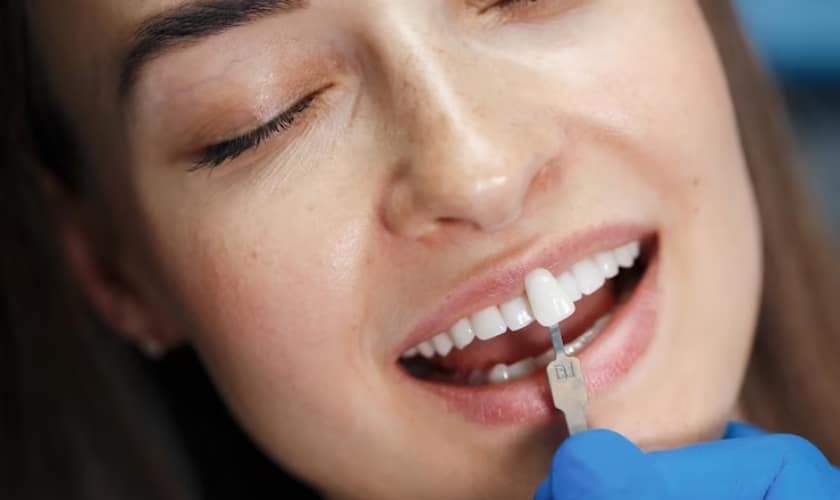Why Choose Dental Sealants to Prevent Cavities
By :
Affordable Dentist | February 16, 2024
In the battle against cavities, sealants emerge as protective shields for teeth. In this blog, we'll delve into the transformative power of dental sealants and why they're more than just a dentist's tool—they're your smile's silent guardians.
Prepare to discover how these simple yet effective coatings can fortify your teeth against the relentless assault of cavities. Read on to find out how your dentist in Crowley, TX, ensures your smile stays bright and healthy for years to come. Get ready to unlock the secrets of optimal oral health with the unsung hero of dentistry: sealant treatments!
Understanding Dental Sealants: A Closer Look
Sealants are thin layers of plastic resin that your dentist applies on the chewing surfaces of molars and premolars. These areas often have deep grooves and pits where food particles and bacteria can easily accumulate, leading to cavities.
Sealants create a smooth surface by sealing off these vulnerable areas, which makes it harder for decay-causing agents to take hold. This preventive measure is especially beneficial for children and teenagers whose developing oral hygiene habits may not fully protect against cavities.
The Role of Sealants in Preventing Cavities
Your Crowley dentist might recommend sealant applications to safeguard teeth against cavity-causing bacteria. The following are the benefits of dental sealants.
Sealing Off Vulnerable Areas: Sealants fill in the deep grooves and pits of teeth, preventing food particles and bacteria from settling in and causing decay.
Protecting Hard-to-Reach Areas: The surfaces of molars and premolars are frequently complex and challenging to fully clean. Sealants provide a smooth surface, making it easier to maintain oral hygiene.
Early Intervention for Children: Children and teenagers are prime candidates for sealants as they are more susceptible to cavities due to their developing oral hygiene habits and dietary choices.
The Application Process: Simple and Painless
When you visit your dentist for a sealant session, expect these steps.
Preparation: Before applying the sealant, the dentist meticulously cleans and dries the tooth surface to remove any debris or bacteria. If you are already having periodontal disease, discuss this with your dental practitioner to prepare your teeth for sealants accordingly.
Application: Using a precise brush or applicator, your dentist paints the liquid sealant onto the grooves and pits of the tooth. The materials used for sealants are designed to offer lasting protection to your teeth with routine care and oral hygiene.
Curing: The sealant is placed and then rapidly hardened using a specialized light to form a robust barrier that keeps cavities out.
Benefits Beyond Cavity Prevention
Cost-Effective Protection: Compared to the expense of treating cavities, sealants are a cost-effective preventive measure.
Long-Term Durability: With proper care, sealants can last for several years, providing continuous protection against cavities.
Non-Invasive Procedure: Unlike dental fillings or other restorative treatments, sealants require no drilling or anesthesia, making them a painless option for patients.
Who Can Benefit from Dental Sealants?
Sealants are not for every patient. According to many dentists, the eligible candidates for sealant treatments include the following:
Children and Teens: Sealants are most commonly applied to the permanent molars and premolars of children and teenagers to safeguard against cavities during their formative years.
Adults with Deep Grooves: Adults who have deep grooves or pits in their teeth may also benefit from sealants to prevent decay in hard-to-reach areas.
Maintaining Sealant Effectiveness: Tips for Success
Regular Dental Check-Ups: By scheduling routine dental exams, dentists can keep an eye on the status of sealants. They can perform any necessary replacements or repairs during these appointments.
Good Oral Hygiene Practices: Brushing twice a day is essential. Flossing daily is equally important. Using fluoride mouthwash complements these routines. These actions maintain sealant integrity and prevent cavities effectively.
Dental sealants play a crucial role in cavity prevention by providing a protective barrier against decay-causing bacteria and acids. Everyone, from children to adults, can benefit from this simple yet effective preventive measure. Incorporating sealants into your oral hygiene routine helps. Stay proactive about dental care. You can enjoy a lifetime of healthy smiles without cavities. Make sure you discuss your eligibility for sealant sessions with your dentist in Crowley.


